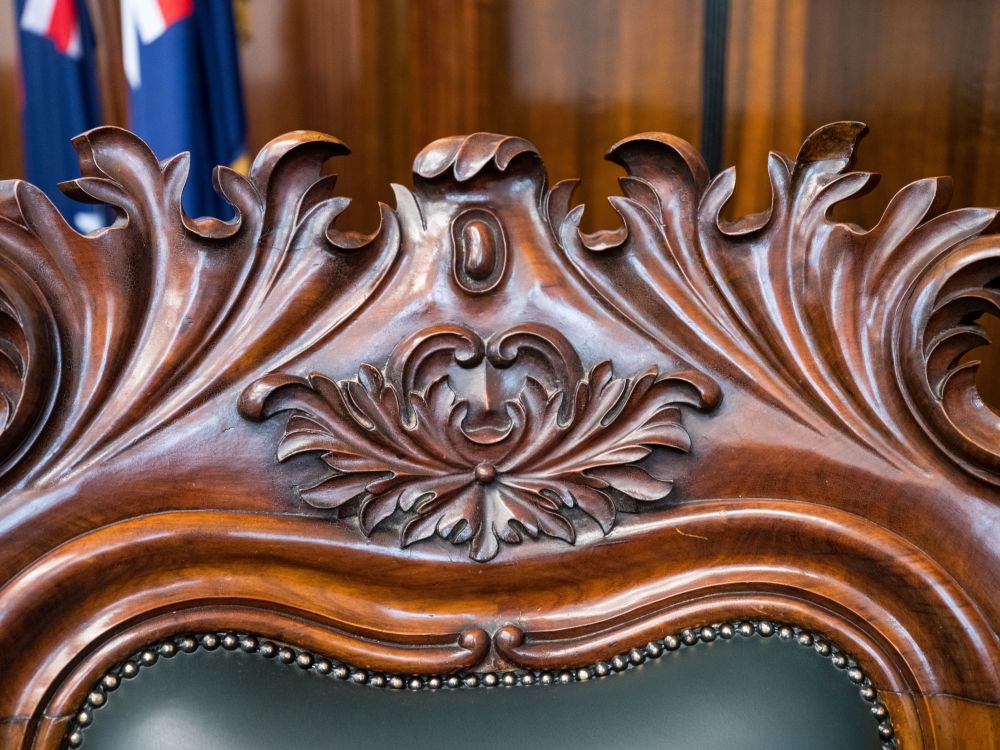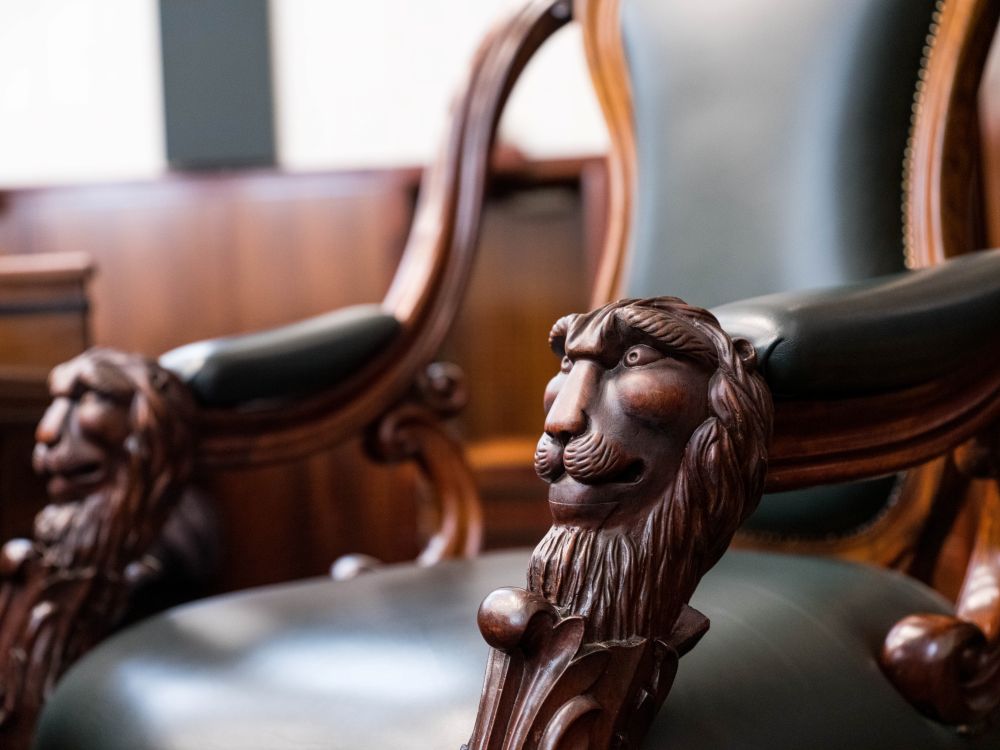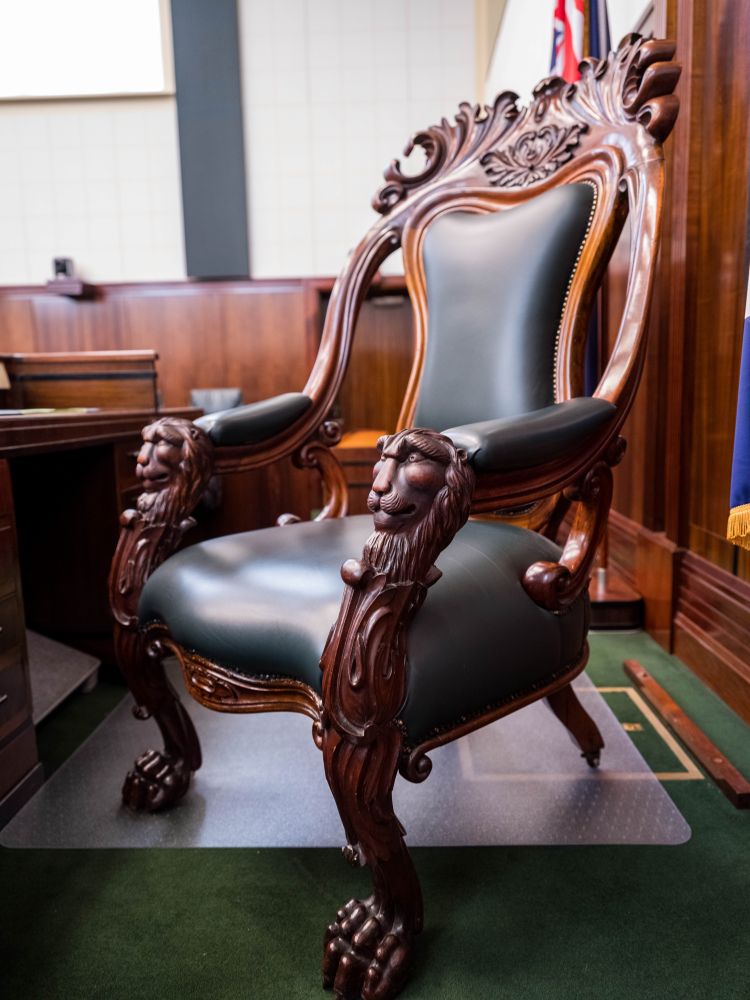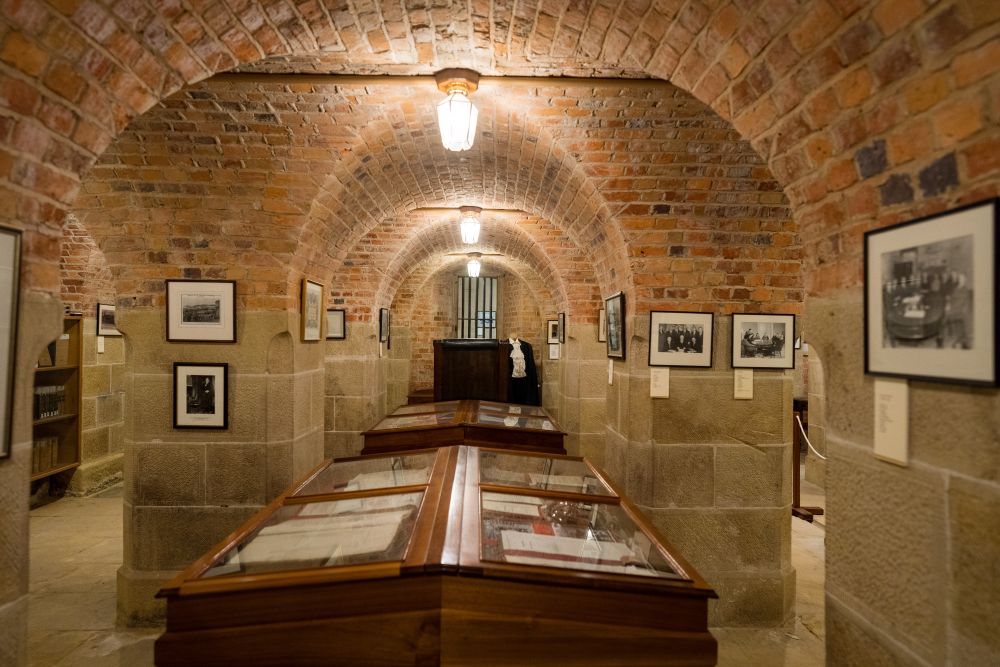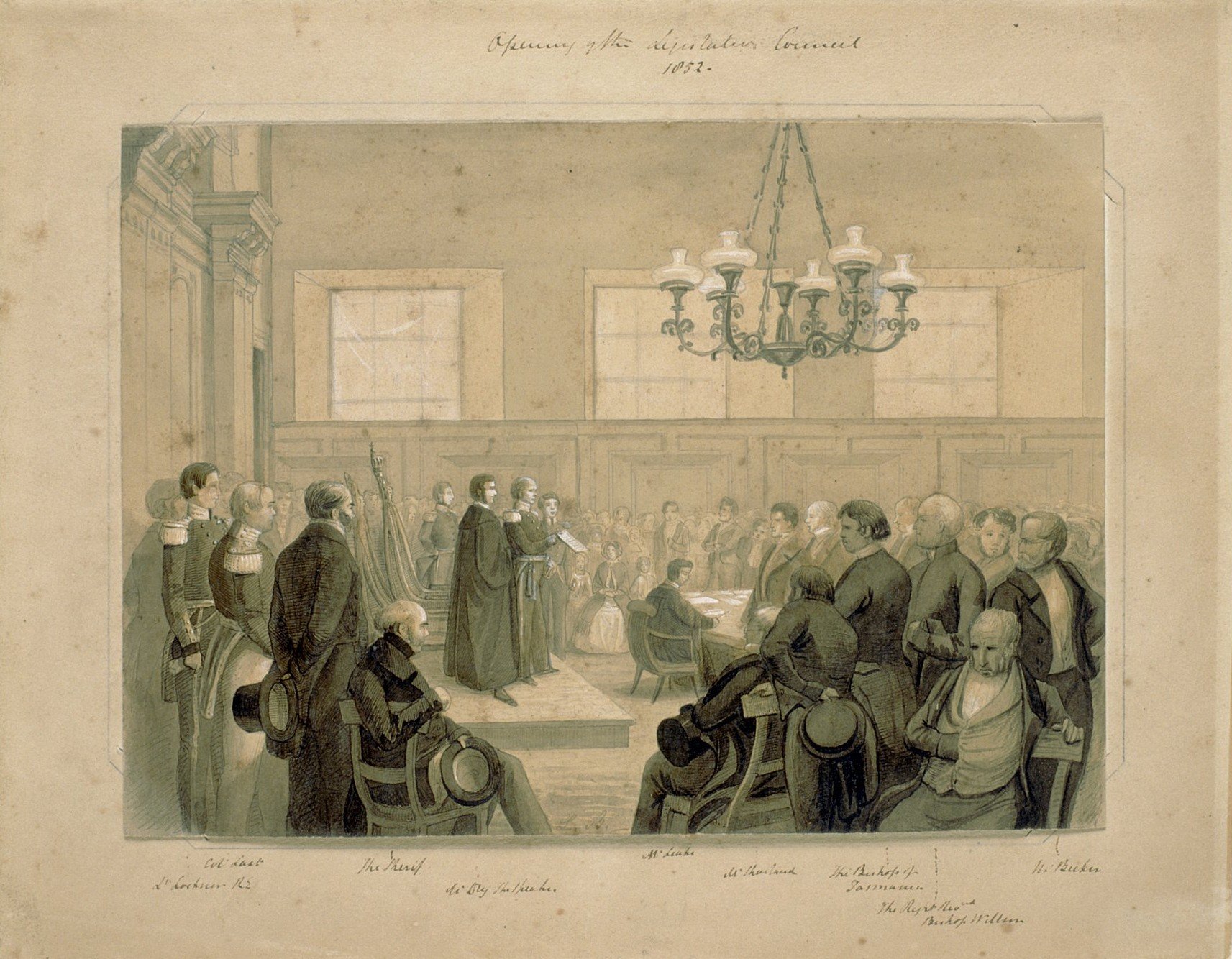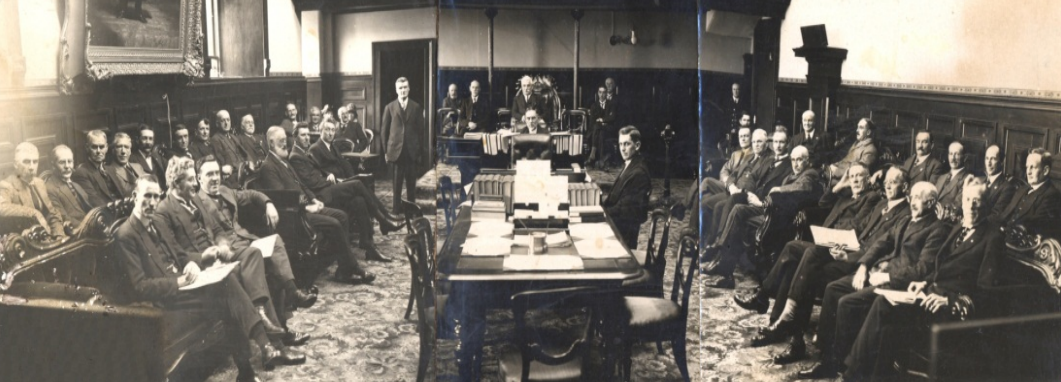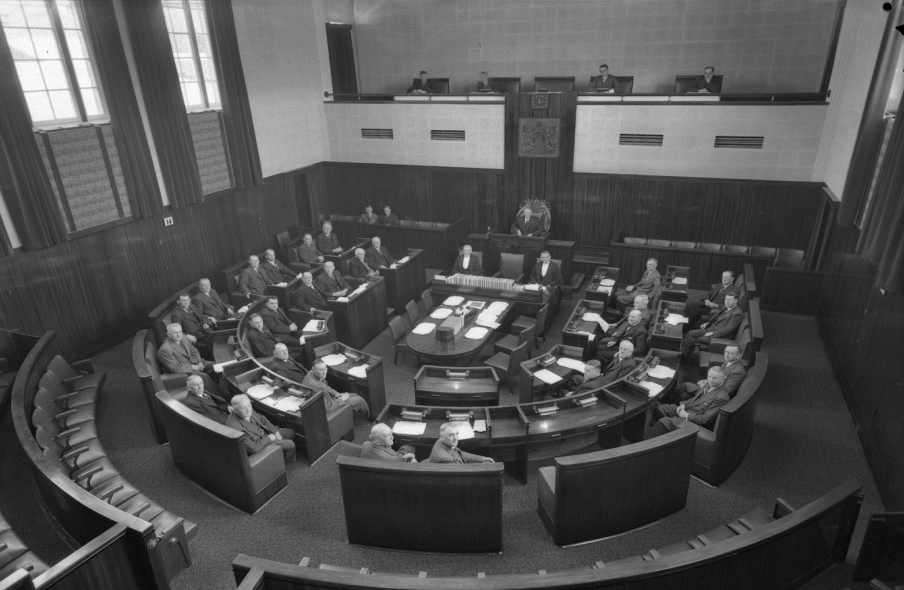
Parliament House
Parliament House was initially built for use as a Customs House, with construction taking place between 1835 and 1840. The Legislative Council began using its Long Room for meetings from 1841, which then became the House of Assembly’s first Chamber in 1856, with the Council establishing themselves in a new Chamber. Customs continued using part of the building until 1904.
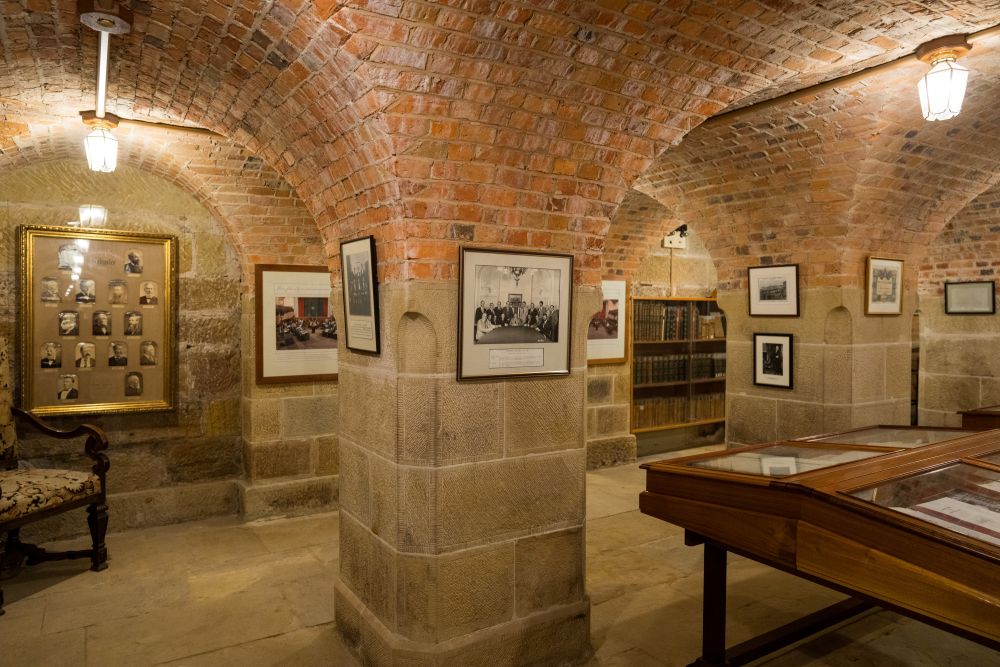
| 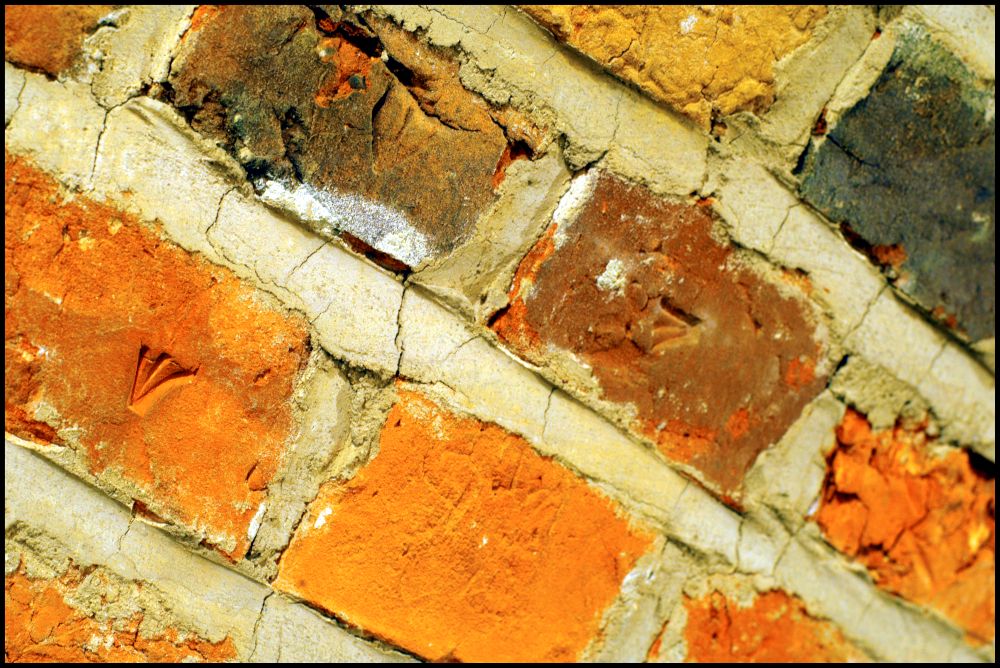
| 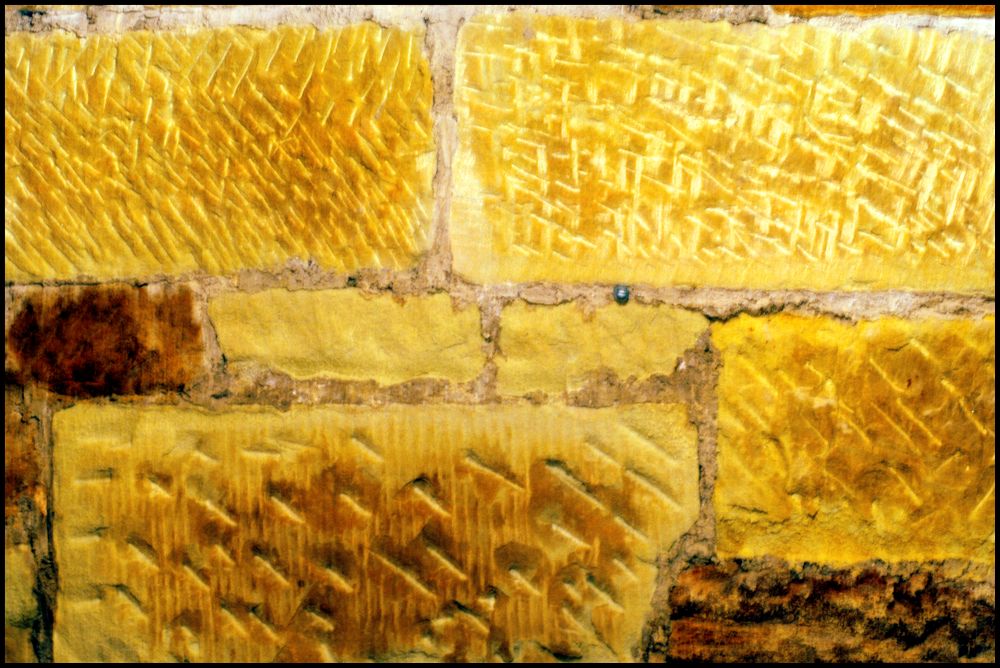
|
| Customs House store room, now in use as the Parliamentary Museum. | Detail of convict made bricks used in the construction of Customs House. | Detail of convict worked sandstone in the Parliamentary Museum. |
|
|
| Legislative Council meeting in the Long Room, 1852. Sketch by Ludwig Becker. | House of Assembly meeting in the Long Room, July 1925. |
During the late 1930s renovations and extensions were carried out which provided for a new House of Assembly Chamber, opened in 1940, as well as more office accommodation and improvements to other facilities. Having undergone further renovations in the late 1970s and 2008, much of the material in the House of Assembly Chamber is not original to the 1940 room, though it has been returned to the art deco style.
| 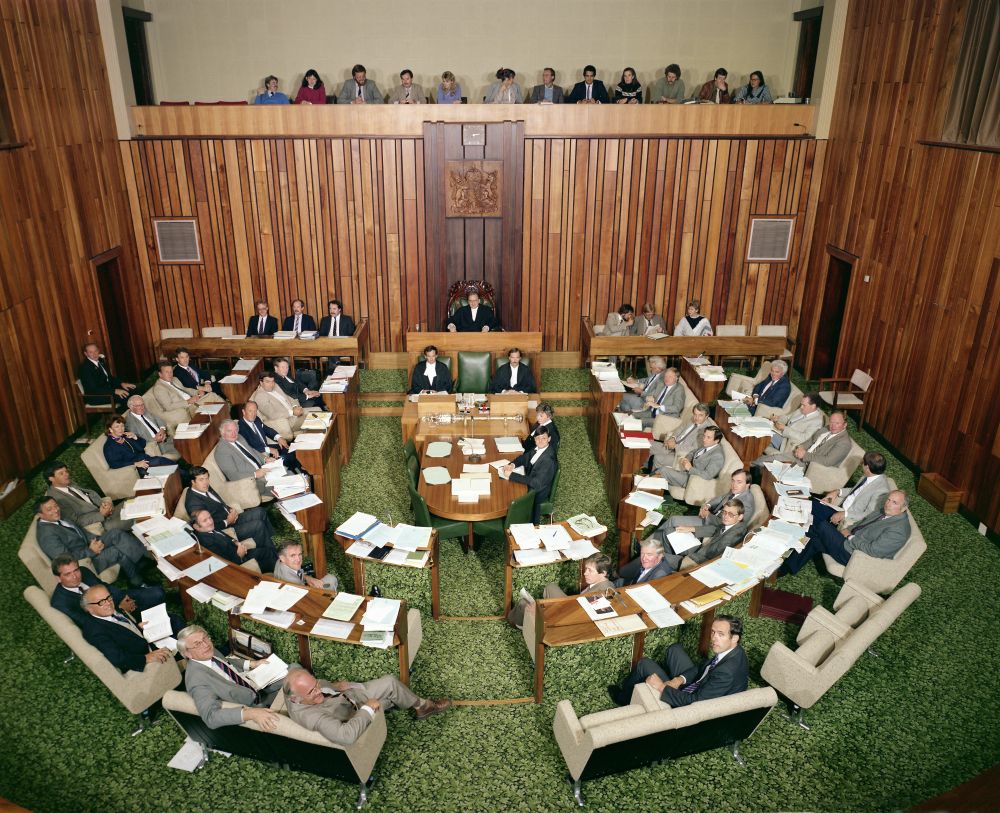 | 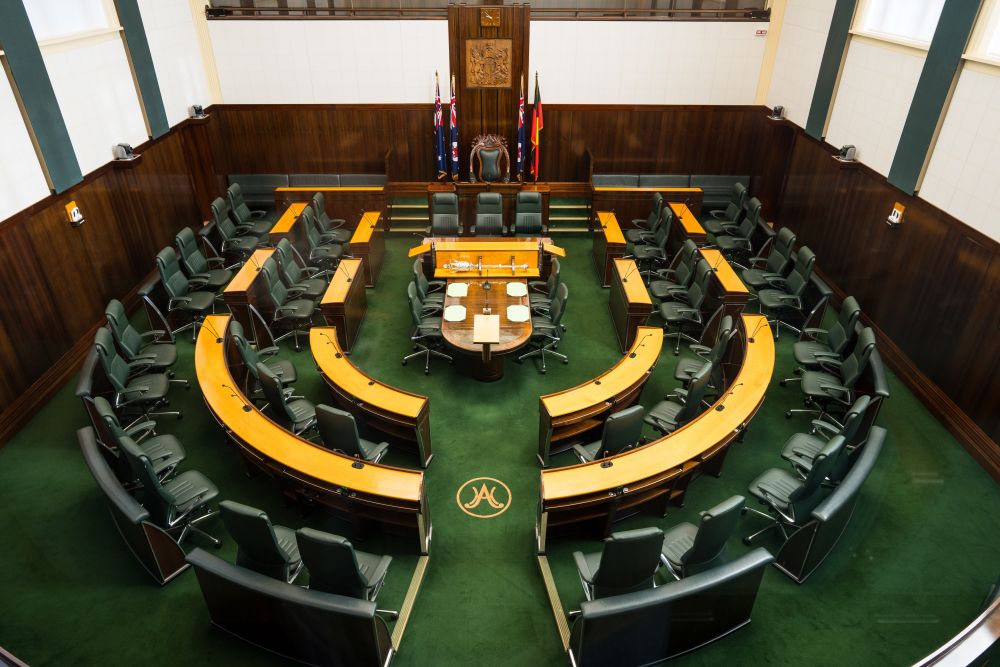 |
| House of Assembly Chamber, 1941. | House of Assembly Chamber, 1985. | House of Assembly Chamber, 2025. |
History of the House of Assembly
The first Tasmanian Parliament opened on 2 December 1856, with the House of Assembly joining the already existing Legislative Council in accordance with the Constitution Act 1854.
For this first House, the colony was divided into 24 electoral districts. The district of Hobart returned five Members and Launceston three, with the remaining 22 electorates electing one member each, giving a total of 30 Members. The term for the House of Assembly was a maximum of five years. All voters had to be adult males, natural born or naturalised citizens and to have been resident in the colony for a minimum of 12 months.
Since then, there have been a number of changes, including to the number of Members, voting qualifications and the electoral system itself.
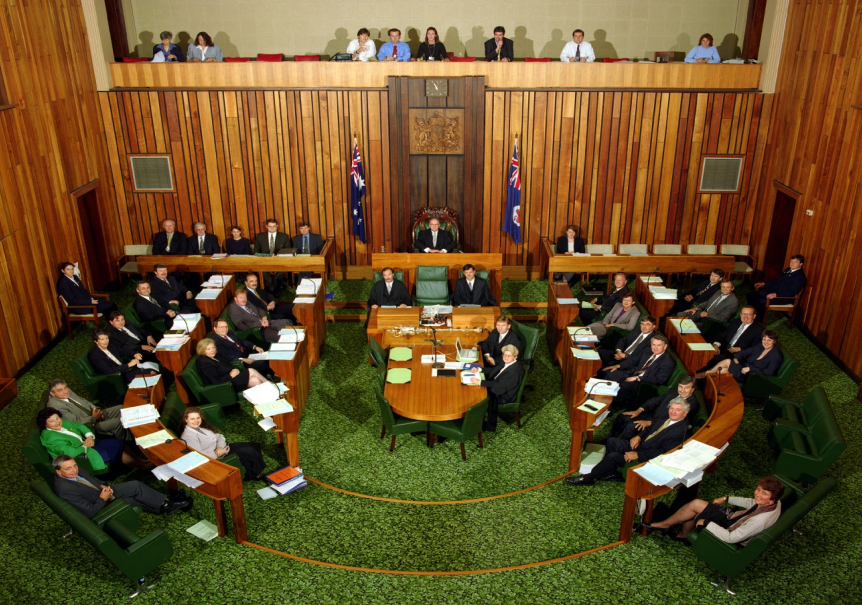
House of Assembly Chamber following the 1998 reduction from 35 to 25 members.
Over the years, the size of the House of Assembly and of the Legislative Council has varied as follows:
Date | Legislative Council | House of Assembly | Total |
|---|---|---|---|
1856 | 15 | 30 | 45 |
1870 | 16 | 32 | 48 |
1885 | 18 | 36 | 54 |
1893 | 18 | 37 | 55 |
1898 | 19 | 38 | 57 |
1900 | 18 | 35 | 53 |
1906 | 18 | 30 | 48 |
1946 | 19 | 30 | 49 |
1959 | 19 | 35 | 54 |
1998 | 19 | 25 | 44 |
1999 | 15 | 25 | 40 |
2024 | 15 | 35 | 50 |
Women were first eligible to vote in the House of Assembly election of 1903, following an amendment to the Constitution Act. This had occurred following several years of concentrated campaigning by women including Jessie Spink Rooke and Georgina Kermode, both leaders in the Woman's Christian Temperance Union.
Their efforts included extensive public speaking and signature gathering to build public and parliamentary support. In 1896 and 1897 they delivered multiple petitions totalling around 2000 signatures each year to Parliament. Two Bills to achieve suffrage passed the House of Assembly but were defeated in the Legislative Council over this period. Another petition of 5500 signatures was presented in 1898.
While women were able to vote in House of Assembly elections from 1903, limitations of varying kinds continued to be applied in Legislative Council elections until the 1960s, at different points restricting the vote to women of a certain age, to those who had served in the World Wars, or to who were married to property owners.
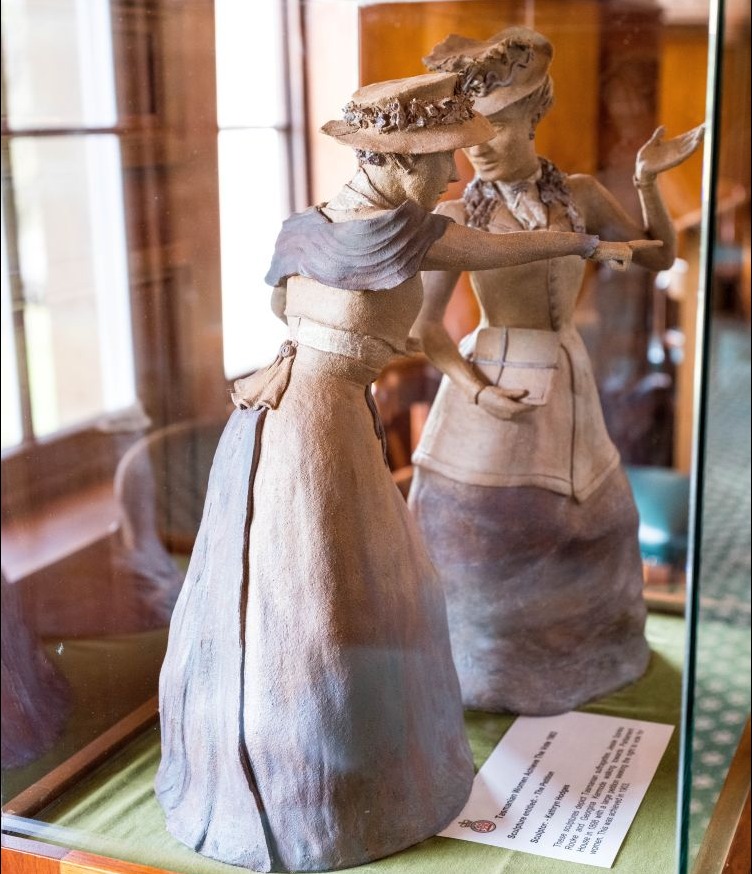
'The Petition': Sculpture of Georgina
Kermode and Jessie Spinks Rook
by Kathryn Hodges
Women first became eligible for election to Parliament in 1921, but it was not until 1948 that the first woman, Margaret McIntyre, was elected to the Legislative Council. The first women elected to the House of Assembly were Amelia Best and Mabel Miller, both elected in 1955.

Margaret McIntyre MP
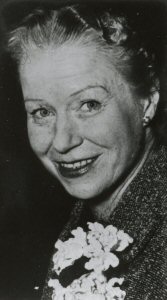
Dame Mabel Miller MP
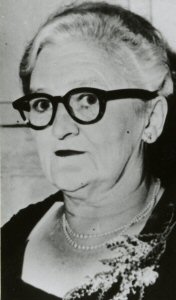
Amelia Best MP
The Mace
The Mace of the Tasmanian House of Assembly has been used since 1956. It was presented to the Parliament by the Davies family in memory of those of the family who had been Members of the Parliament and to commemorate the centenary of responsible government. It was created by Harold Sargison and features assorted Tasmanian symbols and semi-precious stones.
In Westminster parliamentary tradition, the mace is a symbol of the authority of the lower house and of the Speaker. It is placed on the table of the House whenever the Speaker is presiding over proceedings and is only lowered when the Speaker leaves the chair to enable bills to be discussed in a Committee of the Whole House.


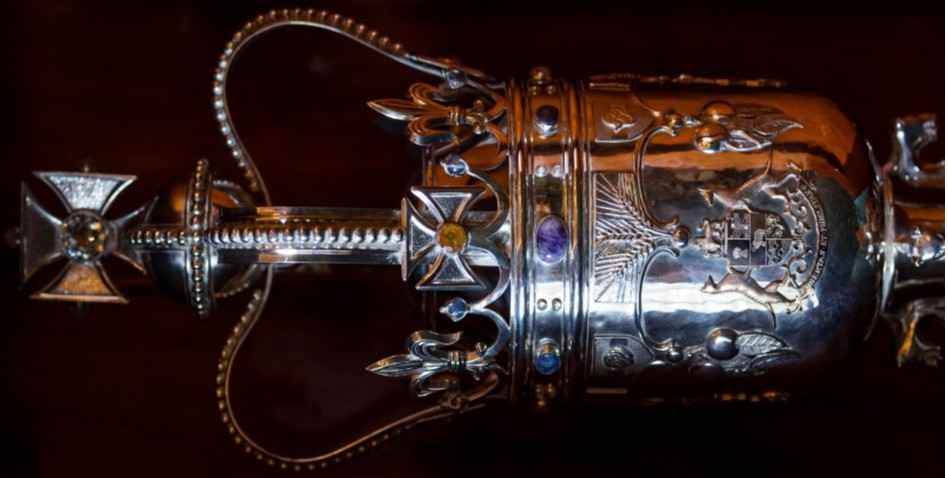
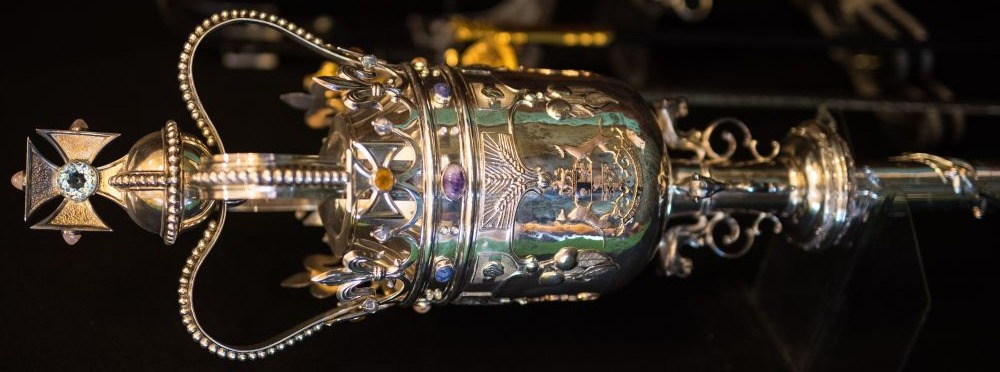
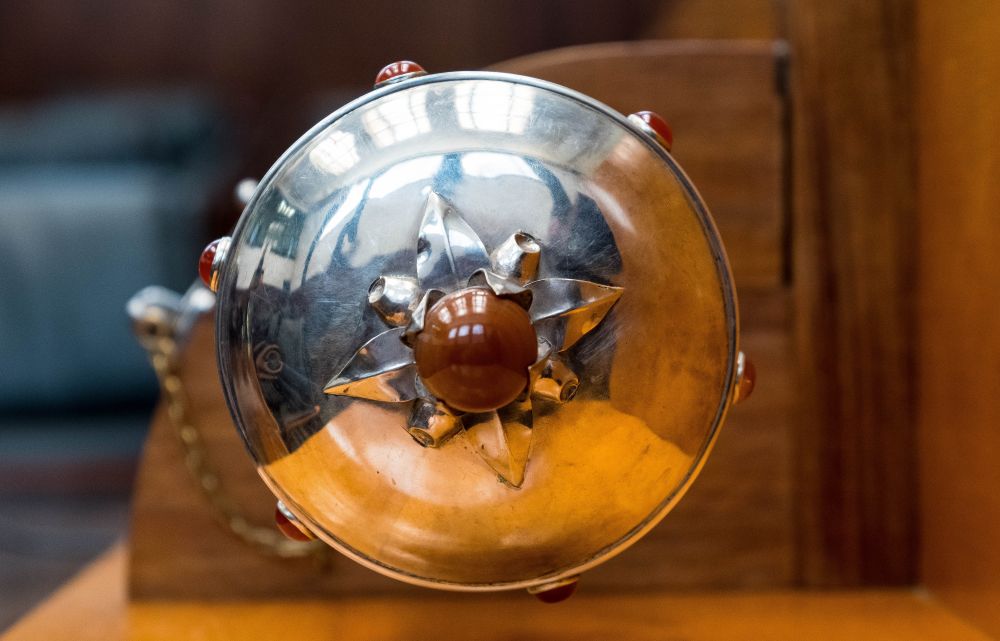
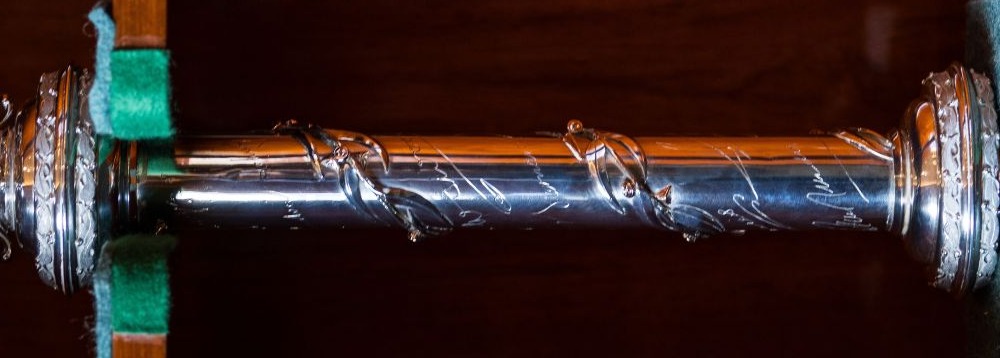
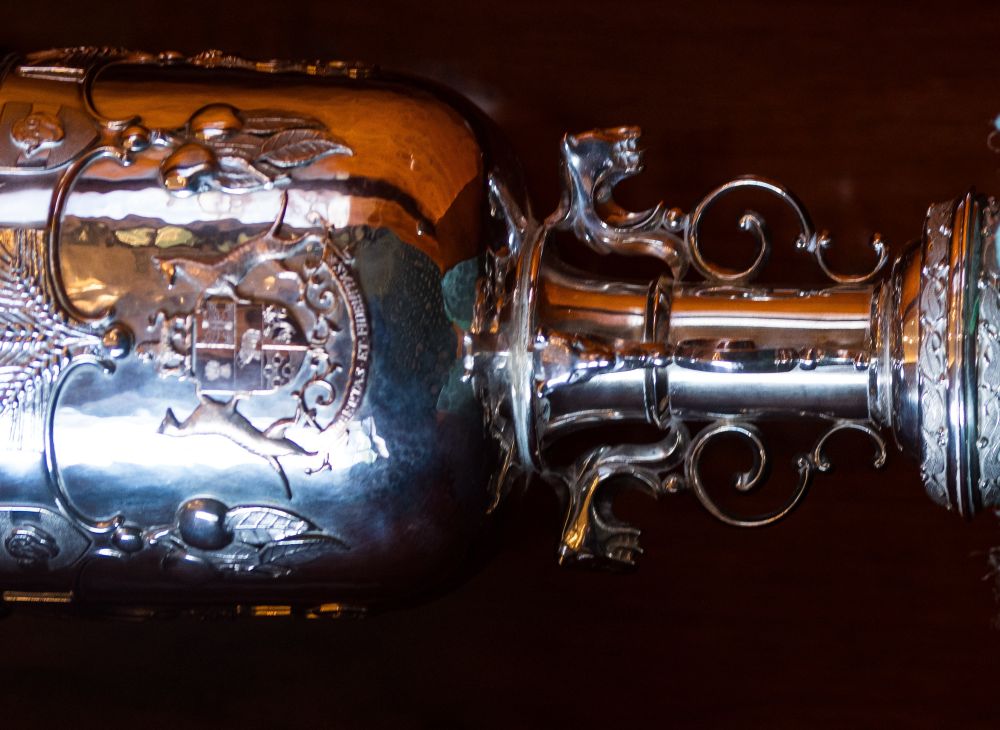
The Speaker's Chair
Prior to the creation of the bicameral Parliament, the title of Speaker was held by the Presiding Officer of the Legislative Council. It was in this context that in 1851 a local firm, Whitesides, was commissioned to create furniture for the Legislative Council, including a chair for the Speaker. Made of blackwood and featuring lion carvings, the chair cost £15.
This chair, along with the title of Speaker, was then passed to the House of Assembly. Despite a new chair being created in 1940 to suit the new House of Assembly chamber, this original chair has continued to be used.
